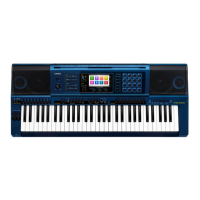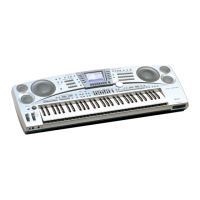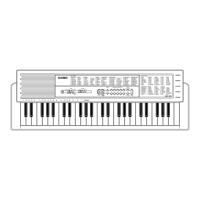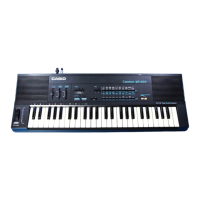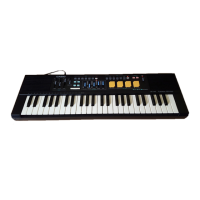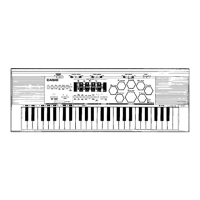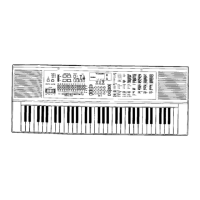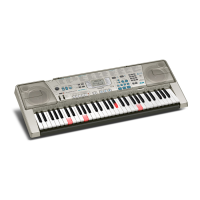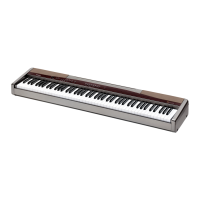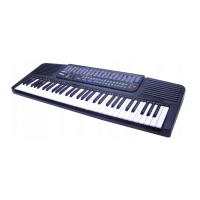Do you have a question about the Casio MZ-X500 and is the answer not in the manual?
| Control type | Buttons |
|---|---|
| MIDI-keyboard number of keys | 61 keys |
| Product color | Blue |
| Sound effects | Chorus, Equalization, Flanger/Digital Signal Processing (DSP), Phaser, Pitch shift, Reverberation |
| Volume control | Digital |
| Octave adjustment | Yes |
| Maximum polyphony (notes) | 128 |
| Music memory capacity (songs) | 100 |
| Interface | USB |
| Headphone outputs | 1 |
| USB ports quantity | 2 |
| Cables included | AC |
| Display type | LCD |
| Depth | 400 mm |
|---|---|
| Width | 950 mm |
| Height | 151 mm |
| Weight | 7600 g |
Procedure for editing individual tone parameters and adding effects.
Steps to change the name of an edited tone.
Procedure to remove a tone from the keyboard.
Overview of tone editing parameters and their types.
How user areas are used for rhythm editing.
How to store and recall user rhythms.
Steps to create and modify user rhythms.
Procedure for recording data into individual rhythm parts.
How to create custom music presets.
Procedure to edit the chord progression of a preset.
Explains timing settings for chord progression playback.
Procedure to edit individual steps of an arpeggio.
How to adjust arpeggio parameters like step size and groove.
Steps to save an edited arpeggio.
How to set up a sequence of registration recalls.
How to adjust pad playback settings.
How to configure advanced settings for pad recording.
How to record a new phrase over an existing one.
How to adjust the playback start point of a sample.
How to record individual parts into tracks.
How to re-record specific song parts for correction.
How to record new performance over existing track data.
How to rename, copy, and delete recorded MIDI data.
How to access the event editing screen.
How to modify the value of a parameter or copy an event.
Adjusts note timing to match a reference note.
Procedures to delete single events or specific types.
Explains general advanced settings for the keyboard.
Settings for reverb, chorus, and delay effects.
How to assign functions to controllers like knobs and pedals.
Details on port, channel, and part assignments for MIDI.
Visual representation of signal flow and connections.
